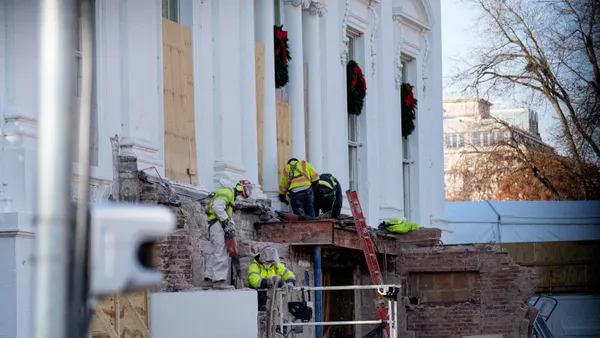Dive Brief:
- Washington, DC At-Large Councilmember Vincent Orange proposed the construction of a 125-unit tiny house development in each of DC’s eight wards Tuesday as a part of his "Tiny Housing Initiative Bill," which would provide 1,000 homes for millennials and low-income homebuyers, the Washington City Paper reported.
- Orange’s bill sets the homes at a maximum sales price of $50,000 and makes them available only to District residents between the ages of 18 and 33, or who make a minimum living wage. However, critics have noted this kind of age requirement is most likely illegal.
- Orange's planned tiny houses would be 600 square feet and include a kitchen, bedroom, bathroom and utilities. Unlike many tiny houses built on trailers to get around building code and zoning requirements, Orange is relying on the Deputy Mayor for Greater Economic Opportunity Courtney Snowden to find tracts of land to build permanent structures.
Dive Insight:
The popularity of tiny houses is sweeping the U.S., both as a way of living off the grid, but also as a possible housing solution for urban homebuyers who can’t afford, or don’t want, a larger, more expensive home.
Critics of Orange’s plan contend that, if approved, it would be a payday for one of Orange’s favorite causes, the Certified Business Enterprise program, because Orange has made it a requirement of the bill that only contractors with small business certification can apply to build the houses.
David Garber, a challenger to Orange’s seat on the council, told the City Paper, "Unlike Mr. Orange, when I'm on the council, my priority will be to identify and support non-gimmicky affordable housing solutions that don't break the law and start with resident input and equitable opportunity for all District residents."
The City Paper noted that despite the "exciting" nature of Orange's proposal, "this bill almost certainly won't pass."
It does, however, mark a rare government effort to spur construction of these tiny houses, as most cities still find the small structures in a legal gray area. Some cities are making efforts to change that standard, such as Seneca, MO, which is considering creating a "tiny house" ordinance in response to the growing popularity of the microliving spaces.












